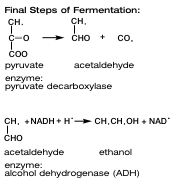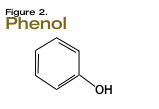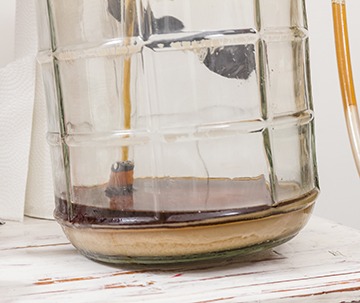Yeast Metabolism
Yeast is added to wort by brewers. Now what? The yeast begin to feed on sugar and grow in numbers. The chemical reactions within an organism that sustain life are called metabolism. As brewers, the aspects of yeast metabolism that interest us most are the breakdown of sugar, which releases energy, and the chemical pathways leading to compounds that exit the cell and yield flavors or aromas.
Yeast pick up sugar, nutrients and other substances from the wort. Some of these compounds, such as sodium (Na+) and potassium (K+) ions, diffuse freely across the membrane into the cell. Others, including glucose, fructose and maltose, are brought into the cell through specialized pores. Some compounds — such as amino acids and calcium (Ca2+) ions, when they are at a low extracellular concentrations — require the cell to expend some energy to bring them inside.
Sugar is taken up in a defined order: glucose, fructose, sucrose, maltose and then maltotriose. The degree of maltotriose uptake can determine differences in attenuation.
Before being brought into the cell, sucrose is split into its component glucose and fructose residues by the enzyme sucrose invertase. Yeast excrete this enzyme into the medium they are growing in. The uptake of maltose is aided by the enzyme maltose permease. Maltose is then broken down into its component glucose subunits by the enzyme maltase. In the presence of glucose, expression of the permease genes for maltose and maltotriose are repressed.
Oxygen is quickly taken up by yeast, usually within 30 minutes after pitching. In nature, yeast uses the oxygen to consume sugar. This is called aerobic growth. It is the pathway through which living organisms extract the greatest amount of energy from sugar. But yeast are adaptive, because they often encounter environments where oxygen is limited. Many organisms can survive in oxygen free environments and still get energy out of sugar. We call this anaerobic growth. Louis Pasteur coined the term “anaerobic fermentation” in the 1860s, to describe the ability of yeast to grow when oxygen deprived. When yeast anaerobically ferment, they produce ethanol.
 Even if oxygen is present in the fermentation process, yeast will still produce ethanol. This is called the Crabtree Effect (and also the Reverse Pasteur Effect). The Crabtree Effect occurs when there are high glucose concentrations. All beer wort will contain higher than 1% sugar, so fermentations will result in alcohol creation even when oxygen is present. The problem with oxygen exposure is not loss of ethanol, but off flavors that result from metabolic pathways being turned on by oxygen. For example, beer fermentations that see steady exposure to oxygen will result in higher concentrations of acetaldehyde, due to oxidation of ethanol into acetaldehyde.
In beer fermentation, the major end product of sugar metabolism is ethanol. The overall reaction from sugar to ethanol is:
Even if oxygen is present in the fermentation process, yeast will still produce ethanol. This is called the Crabtree Effect (and also the Reverse Pasteur Effect). The Crabtree Effect occurs when there are high glucose concentrations. All beer wort will contain higher than 1% sugar, so fermentations will result in alcohol creation even when oxygen is present. The problem with oxygen exposure is not loss of ethanol, but off flavors that result from metabolic pathways being turned on by oxygen. For example, beer fermentations that see steady exposure to oxygen will result in higher concentrations of acetaldehyde, due to oxidation of ethanol into acetaldehyde.
In beer fermentation, the major end product of sugar metabolism is ethanol. The overall reaction from sugar to ethanol is:
 ADP (adenosine diphosphate) and ATP (adenosine triphosphate) are molecules involved in the storage and transfer of energy within a cell. It takes energy to add a phosphate group to ADP, making ATP. When ATP is broken down into ADP plus phosphate, this energy is released.There are many individual steps in this overall equation, as shown in Figure 1, and in fact the equation can be split into two parts: 1.) the pathway starting with glucose and ending with pyruvate, and 2.) the multiple pathways leading from pyruvate, which include ethanol formation. The first pathway, in which glucose is broken down into two pyruvates, is given by the following net equation. These steps in glucose breakdown are often referred to as glycolysis or as the Embden-Meyerhof Pathway.
ADP (adenosine diphosphate) and ATP (adenosine triphosphate) are molecules involved in the storage and transfer of energy within a cell. It takes energy to add a phosphate group to ADP, making ATP. When ATP is broken down into ADP plus phosphate, this energy is released.There are many individual steps in this overall equation, as shown in Figure 1, and in fact the equation can be split into two parts: 1.) the pathway starting with glucose and ending with pyruvate, and 2.) the multiple pathways leading from pyruvate, which include ethanol formation. The first pathway, in which glucose is broken down into two pyruvates, is given by the following net equation. These steps in glucose breakdown are often referred to as glycolysis or as the Embden-Meyerhof Pathway.
Glycolysis occurs in the free medium of the cell, the cytosol. Enzymes floating in the cytosol catalyze each step.
Pyruvate has many uses in the cell. For example, it is used in the production of certain amino acids. However, most pyruvate takes one of two main pathways — it can go to the mitochondria and get completely broken down to carbon dioxide (CO2) and water. (In other words, it can participate in aerobic respiration.) Or, it can stay in the cytosol and be converted to ethanol. (In other words, it can take part in alcoholic fermentation.)
Which pathway do brewers prefer? Since we are not making water, brewers want yeast to make ethanol. Yeast gets only 8% of the energy from each molecule of glucose if they produce ethanol instead of completely breaking glucose down via aerobic respiration. This means that a yeast culture will grow into more daughter cells if it grows aerobically (with oxygen) compared to anaerobically (no oxygen). This is the reason some homebrewers will add oxygen or use a stir plate with yeast starters, the oxygen will encourage more yeast growth. But the yeast growth is still not the same as a laboratory situation due to the sugar-induced Crabtree Effect.
From the equation for glycolysis, it can be seen that the compound NAD+ is required to produce pyruvate. NAD (nicotinamide adenine dinucleotide) is a molecule that is involved in oxidation and reduction reactions in metabolism. It exists in two forms. NAD+ is an oxidizing agent. (In other words, it accepts electrons.) NAD+ reacts with 2 electrons and a hydrogen ion to form NADH, a reducing agent. (In other words, it will donate electrons to other molecules.) The cell has a limited quantity of NAD+, so it needs to regenerate NAD+. It can do that in the Krebs Cycle, but if the cells are devoid of oxygen, this cannot happen. This leads to the buildup of pyruvate, no energy creation, and no more NAD+ (the cells run out of it!). So the yeast need to “get NAD back” when oxygen is limiting.
The two-step reaction of pyruvate to ethanol generates the required NAD+.
So the yeast is happy, or at least they can limp along. The ethanol diffuses outside of the cell, perhaps as a defense mechanism for yeast since ethanol is toxic to many other organisms, including most non-Saccharomyces species of yeast.
Not all of the glucose flows through pyruvate into ethanol. A small amount of glucose enters the pentose phosphate pathway, also called the hexose monophosphate shunt. This pathway produces a small amount of NADPH (a molecule similar to NADH), but is primarily a source of precursor molecules for nucleotide synthesis.
Like glucose, fructose has multiple pathways it can follow when it enters the cell. Most importantly, there are two short pathways in which it gets converted to glyceraldehyde-3-phosphate, one of the intermediates in glycolysis.
There are many side branches to sugar metabolism, and many of these add to beer’s flavor. The most important of these are esters, fusel alcohols, sulfur containing compounds, carbonyl compounds such as aldehydes and ketones (including diacetyl) and phenolic compounds.
In yeast metabolism, some of the pyruvic acid gets converted to acetyl-CoA. Sugar going to this alternate pathway leads to organic acids, fatty acids, lipids, and esters.
In beer, the phenolic flavors such as band-aid really stands out, ruining most beer, but important for the flavor profile of particular beer styles like Bavarian hefeweizen and Belgian lambic.
The major phenolic compound produced by most yeast is 4-vinyl guaiacol (4 VG). It is produced from the de-carboxylation of ferulic acid. Ferulic acid comes from the malt and hops used, and can be increased by adding a mash rest at 109–113 °F (43–45 °C). The gene called POF (phenolic off flavor) codes for the ferulic acid decarboxylating gene.
Yeast strains used by brewers have a natural mutation in the POF gene preventing them from producing 4 VG. In fact, if normal beer has a phenolic character, it is a good indication that the beer has been contaminated with wild yeast. In rare circumstances, phenolic character can also be derived from mutations in brewers yeast.
Yeast strains used to make Bavarian hefeweizen are good examples of wild yeast that have been purfied and cultured to produce a beer, with an intact POF gene and a resulting phenolic flavor.
Brettanomyces is another genus of yeast that is most well-known for contaminating beer and wine. It produces flavor compounds that are described as barnyard-like and horse blanket. Brettanomyces also produces 4 VG, so its presence in beer is easily detected, and even desired in some beer styles such as Belgian lambic beer.
 Even if oxygen is present in the fermentation process, yeast will still produce ethanol. This is called the Crabtree Effect (and also the Reverse Pasteur Effect). The Crabtree Effect occurs when there are high glucose concentrations. All beer wort will contain higher than 1% sugar, so fermentations will result in alcohol creation even when oxygen is present. The problem with oxygen exposure is not loss of ethanol, but off flavors that result from metabolic pathways being turned on by oxygen. For example, beer fermentations that see steady exposure to oxygen will result in higher concentrations of acetaldehyde, due to oxidation of ethanol into acetaldehyde.
In beer fermentation, the major end product of sugar metabolism is ethanol. The overall reaction from sugar to ethanol is:
Even if oxygen is present in the fermentation process, yeast will still produce ethanol. This is called the Crabtree Effect (and also the Reverse Pasteur Effect). The Crabtree Effect occurs when there are high glucose concentrations. All beer wort will contain higher than 1% sugar, so fermentations will result in alcohol creation even when oxygen is present. The problem with oxygen exposure is not loss of ethanol, but off flavors that result from metabolic pathways being turned on by oxygen. For example, beer fermentations that see steady exposure to oxygen will result in higher concentrations of acetaldehyde, due to oxidation of ethanol into acetaldehyde.
In beer fermentation, the major end product of sugar metabolism is ethanol. The overall reaction from sugar to ethanol is:







